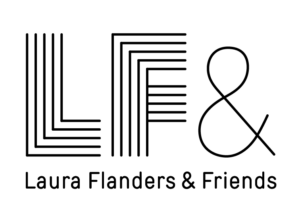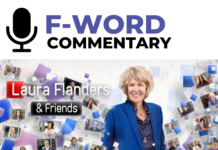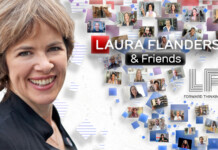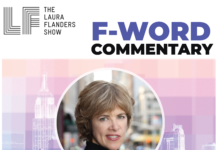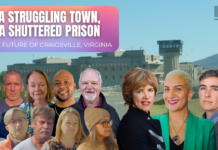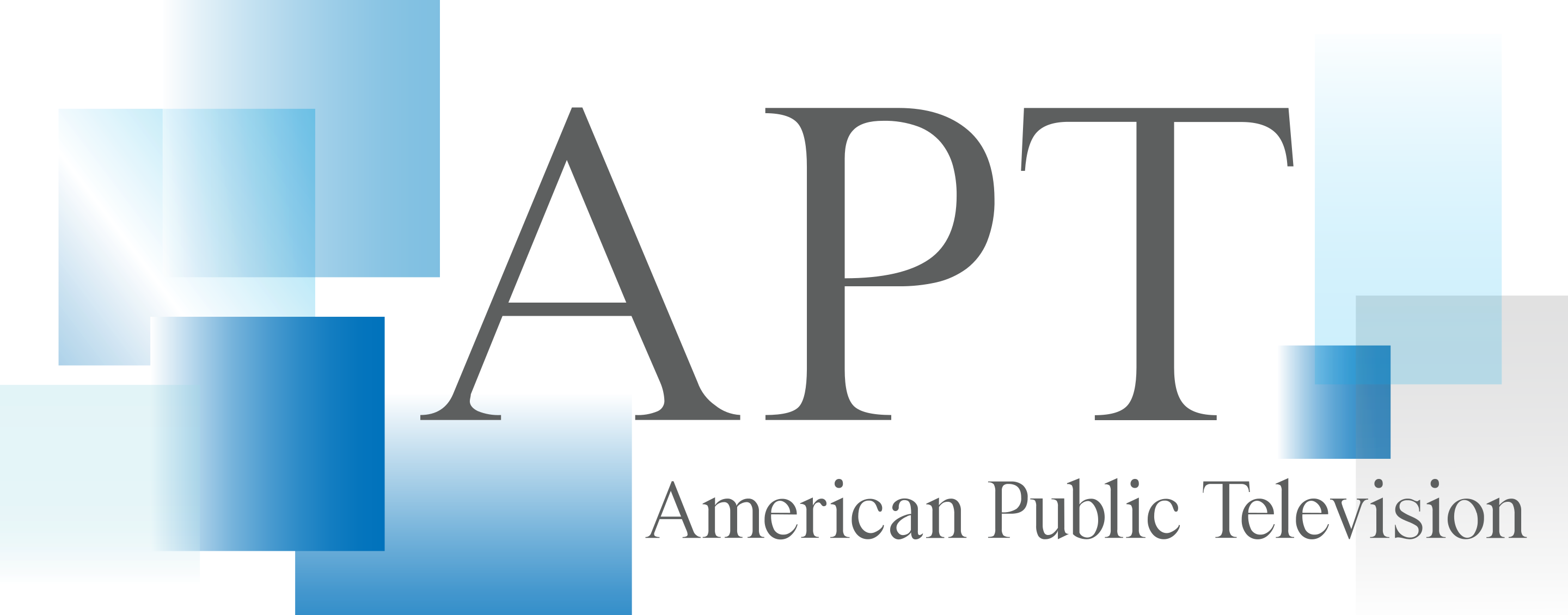About
Vaccines against Covid-19 were developed at record speed. But getting the public to take them may be an uphill battle. In this episode, Laura interviews three public health experts about the challenges of eradicating Covid-19 in the face of widespread hesitancy about vaccines. Why are some Americans resisting vaccination and what is being done to change their minds? Laura and guests explore the roots of vaccine hesitancy, methods for rebuilding public trust in public health, and hiphop as a tool for outreach to vulnerable communities.
To listen to the uncut interviews, and to get research and reading notes for this episode, become a Patreon partner here.
In This Episode
Dr. Oxiris Barbot is a physician and public health expert who served as Commissioner of Health for New York City from 2018 to 2020, guiding the city’s responses to the first wave of the Covid-19 and before that, the largest measles outbreak in 30 years.
Terry McGovern is chair of the Department of Population and Family Health as well as the Program on Global Health Justice and Governance at Columbia University’s Mailman School of Public Health. In the 1980s and ‘90s she founded the HIV Law Project and twice sued the federal government over its AIDS policies and won.
Dr. Olajide Williams is a professor and Chief of Staff of the Department of Neurology at the Columbia University Vagelos College of Physicians and Surgeons. He is one of the world’s leading experts on strokes and the Founder of Hip Hop Public Health, a music-driven public information program that creates culturally-responsive tools from PSAs to music videos and more.
Subscribe to our podcast and become a Patreon partner here for exclusive content and uncut interviews, including this episode’s Uncut Interview with Dr. Olajide Williams – Vaccine Hesitancy: A Rights Based Approach For The Most Vulnerable.
Prefer to Listen?
Transcript
– Science isn’t neutral.
– The history of criminal activity by the medical community on Black people in this country is just appalling.
– All the more reason to really have a community-based, human rights approach in how we deal with this pandemic.
– It is up to us to rebuild that trust.
– We’re only as successful as our most challenged community. Without public health, we don’t have anything else.
– Still coming up on “The Laura Flanders Show,” the place where the people who say it can’t be done take a back seat to the people who are doing it. A year into a global pandemic, we’ve become used to reporting on research as if science operates at a level removed from society, as if once we have the right chemicals, the community will simply cooperate. But take any epidemic from flu to Ebola, that’s not how it works. Structural barriers block certain groups from participating. A lack of transparency makes people suspicious. Public health information gets politicized. When pharmaceutical company Pfizer announced progress towards a vaccine in November, lots of Trump supporters accused their company of withholding the news until Biden won. And then, of course, there is cost as a barrier, and the money in medicine gives a whole lot of us pause, especially when, as in this case, there’s so much of it to be made. The fact is no matter how good the tests, without enough access or trust, people won’t get vaccinated. So what can be done? Terry McGovern is Chair of the Department of Population and Family Health, as well as the Program on Global Health Justice and Governance at Columbia University’s Mailman School of Public Health. In the 1980s, she founded the HIV Law Project, and twice sued the federal government over its AIDS policies, and won. We are heading into year two of this particular global pandemic of COVID-19. As we do that, what is uppermost in your mind as regards to priorities for public health provision?
– I would say a human rights-based approach. That means meaningful participation of affected people. It means transparency. It means accountability. We’ve really had very little of that in the COVID pandemic to date. So I am extremely concerned as we come into this period where a vaccine rollout begins that we don’t just trample all over people’s human rights.
– Let me just get this right, while so many people are focusing on tests, and research, and vaccines, and vaccine rollout, you haven’t actually mentioned really any of those things. You’re talking about community involvement. Can you explain?
– One of them the reasons that there’s so much valid concern about vaccine distrust is that communities around the world know fully well that communities of color, marginalized populations, indigenous people have often been kind of the guinea pigs of science to test things without their consent. And often, there have been kind of wrong statements about the science. You look at HIV. At the beginning, we had the idea that it was all white, gay men, and in fact, now I think 51% of the cases are women. So I think people all around the world have lots of reasons to be suspicious about science, and all the more reason to really have a community-based human rights approach in how we deal with this pandemic. I see so many similarities between the HIV days, which of course continue, and what’s going on now.
– Is that how you came to this work?
– Yeah, I came to this work just representing clients who had HIV, and in the form of these human beings that came in, who were being denied Medicaid, and being denied disability, and couldn’t get access to drugs, because they couldn’t get in these trials.
– They’re not doing anything. They’re lying, and people are dying. I mean, I have AIDS, and if we don’t come out here and fight, I mean, nobody’s gonna do it for us, so.
– What do we want?
– Cure for AIDS!
– When do we want it?
– Now!
– What do we want?
– Cure for AIDS!
– I learned that science isn’t neutral. It’s not neutral at all. In fact, it’s all about participation, and the people who were overlooked by the kind of health governance structures were the ones coming in who were dying prematurely, who couldn’t access benefits. And around the world, we saw kind of the first, you know, emphasis on treating pregnant women, so that their children wouldn’t become infected, and of course this was very important, but nobody cared about the women. I think we made, and many AIDS activists made, a lot of headway in showing that if you don’t include people, if you don’t talk to people, then you’re gonna get wrong results. And of course, in the environmental justice movement, there have been many, many times, where, again, science missed what was really going on with people, because they didn’t talk to them about what they were eating, and what they were drinking, or they weren’t actually factoring in all the structural factors, how many, you know, toxic waste facilities were in the neighborhoods. So I think overall, we’ve gotten a lot smarter about kind of converging epidemics, converging factors, intersecting factors all affecting health.
– Give us an example of how you take a rights-based approach to communicating around a vaccine like this one.
– People are gonna wanna know what were the steps to make sure that this was safe? How are we sure that this isn’t just about a pharmaceutical making money, or it isn’t just because a presidential candidate wanted a fast vaccine, or a new presidential, president elect wanted a victory. It needs to be explained that there are many, many many steps that ensure that this vaccine is safe. I think people in the community also really do have questions about, you know, who’s paying for this? Where did the money come for this research? And of course, globally, how can we ensure that people all around the world have access? And of course, then at the government level, in many countries, we have to worry about corruption. We have to worry about transparency. We have to worry about are the most marginalized populations gonna be left out? In that case, it’s gonna be very similar, again, to the ACT UP HIV years, where community needs to lead, and monitor very closely, and advocate, and make a lot of trouble when, you know, when the corruption and the lack of equity begins.
– So what are some of the challenges facing cities trying to roll out a vaccination program? We asked Dr. Oxiris Barbot, who was there when New York City faced an outbreak of measles, its worst in 30 years.
– We, in public health, you could say we train for pandemics for our entire careers. And so, while certainly this was a novel virus to the US, to the world, you could say that it wasn’t my first pandemic. I lived through and was a part of the response in New York City to H1N1, which was the world’s most recent pandemic. And so, you know, as a result of having been in a leadership position at that time as well, there were lessons that we learned during H1N1 that we certainly applied to COVID-19, and you know, the one that’s really most central to, I think that’s gonna get us through this, is the importance of focusing on communities, and not forgetting that, you know, while the scientists and the public health practitioners may have the data, the data doesn’t make a difference if you don’t have the confidence and the engagement of community. Early on in New York City when we saw that black and brown communities were being disproportionately affected by the virus, we convened a community advisory board in the very early periods to make sure that the plans that we had in place were informed by what they were seeing, by what they were living on the ground. What it helped us do was to ensure that as we were looking to focus on particular parts of the city, where there was high transmission, that we had a comprehensive approach to making it easy for people to isolate and quarantine safely, so which meant that there were free hotel rooms allocated by the city in those communities where they were needed the most, that similarly there was access to food supply, so that, again, individuals could isolate and quarantine safely. So without community input, I think it would have taken us much, much longer to get it right.
– The same will be true, of course, of the rollout of any successful vaccine. But before this, the rollout, there’s the designing of that rollout strategy, and communications approach. Can you talk about that part of this challenge?
– One of the things that I learned while commissioner of health for New York City, government doesn’t always have to be the messenger. We worked with nurses that were a part of the Orthodox Jewish community, for them to take the message to their community, for them to be able to sit around the kitchen table, and have conversations about what the hesitancy was, to go in essence toe-to-toe against the messages that were being delivered that were not based in science, but were based in fear, and to give the opportunity and the voice to those community members to express their fears, their frustrations. And I think that that helped us a lot to increase in a relatively short amount of time the number of people who were receiving the measles vaccine. So it’s lessons like that that needs to be applied to the COVID response. You know, in October, there were surveys done by the Pew Charitable Trust Foundation that showed that there, you know, more than half Americans are taking a wait-and-see approach, and that when you look at African American communities, that number is even lower. So said differently, roughly 1/3 of African Americans are willing to take the vaccine when it becomes available. We as a country need that number to be upwards of like 70%, so there’s a long way to go.
– Now, you can’t blame the African American community, or more specifically African Americans living right now, for their skepticism and concern with the history in this country of sterilization abuse, Tuskegee, you name it. The history of experimentation on Black bodies and the treatment by governments of Black bodies as less than continues to this day.
– History makes this COVID vaccination rollout even more challenging. But beyond history, there is the real time, structural racism that still exists in our healthcare delivery system, that still exists in our government structure. And so, from my perspective, the way to counter that is to ensure that there is a vaccine confidence rollout, meaning that we engage leaders from all of our communities, but especially the African American community, to be a part of the process in reviewing the data that ensures safety for vaccination, that is a part of plans to ensure how we prioritize which communities and which sub-sectors of communities will receive vaccinations, that they are a part of processes that do the ongoing surveillance of side effects due to vaccination, because without having that transparency, I fear that we run the risk of playing into whatever conspiracy theories there may be out there, and at this point in time, it’s crucial for the American public to be assured that we haven’t cut any corners in terms of assuring the vaccine’s safety, and that we are taking an equity approach to ensuring that those that have been most affected by COVID are at the table making decisions about who it is that receives the vaccine first. We’re only as successful as our most challenged community. And so, really dedicating resources to ensure that those basic needs of housing, food, and economics are met, I think, need to be addressed first, before then we can make the request of communities to go one step further and to trust their, you know, neighborhood pharmacist, to trust their local health department, to trust their local healthcare delivery system to really deliver the vaccines that will help to continue to keep them safe and sound.
– So what are some of the barriers society throws up to people’s participation in research? I asked Dr. Olajide Williams, also at Columbia University School of Public Health.
– I think that one of the first things we need to consider is the socioeconomic context in which many of these communities exist, and that is severe poverty, you know, the vast majority living, you know, way below the poverty line, and so much so that they’re, you know, you can, you need to dig the earth to get to just how far down they are below the poverty line. And that, with that comes all the other challenges of poverty, related to access, insurance coverage, related to education and literacy levels. All of these factors, you know, really serve to really, you know, marginalize communities from public health campaigns, public health messages, and even healthcare itself. And then once you add on top of that the issue of structural racism, Laura, you’re dealing with a quagmire of challenges.
– So, let’s talk about COVID-19. I know you’re watching the studies, you’re watching the the disease itself, the treatment, the communications, the messaging that you’ve talked about. How would you say we in the US are doing, and then my next question, is anybody out of the US doing it better?
– I would say we’re not doing very well. Anyone that claims we’re doing well is suffering from major delusions. We are not doing well. And it’s a tragedy, because the United States is the bastion of medical discovery, you know, the great land of medical advancement, and for us to be leading the way in death, death rates is appalling. And I’m concerned that if we do not get this right, we’re not gonna defeat the, you know, the vaccine hesitancy surrounding this virus, and we’re gonna find that we’re gonna have great inequity, great disparities persist among those most vulnerable communities.
– So let’s look at one of the videos your Hip Hop Public Health project distributes, and set it up for us a little bit. I think the one we’re gonna play is called “20 Seconds or More.”
– To defeat an infection, especially an infection where there is no treatment, and an infection that’s highly contagious, there are some basic things that we need to do. We know that hand washing can reduce infection rates by as much as 21%. And so, I remember asking myself how do we, how do I develop, design a resource that could help spread that message in a way that has the likelihood of being listened to, and being accepted in the communities that I knew even back then were going to be hit the hardest by the virus, and at Hip Hop Public Health, we’ve been working with the power of music for many years now. You know, music is one of the most powerful, and yet underutilized, resources for public health communication, for public health interventions. And it has so many powerful effects on the brain that we actually use music to treat patients. We use music for melodic intonation therapy. So creating a song is what we do, but how we create it is where the magic is, right? We not only employ science in our messaging. We also make sure that the messenger is a culturally accepted, beloved phenomenon. In addition, we wanna have credible messengers within the videos, so that people in those communities can relate to, and hopefully it will translate into behavior change. And from the reports that we’ve been receiving from all over this country, that particular video, it has really not only raised the awareness of the importance of hand-washing among those who watch it, but actually motivates them to want to wash their hands. And that’s what we do.
– It’s so great. We’re talking with Dr. Olajide Williams. Here’s the video. Key measures. ♪ Shout out to the Hip Hop Public Health ♪ ♪ All the healthcare workers on the front line ♪ ♪ Together, we can make a difference ♪
– What’s good, y’all? This is Doug. E. Fresh, coming at you live and direct. All of y’all out there, I got a couple of things I wanna talk to y’all about. ♪ Wash ya hands, everybody ♪ ♪ And everybody, wash ya hands ♪ ♪ 20 seconds or more ♪ ♪ Wash ya hands, everybody ♪ ♪ And everybody, wash ya hands ♪ ♪ My people uptown, wash ya hands ♪ ♪ My people downtown, wash ya hands ♪ ♪ People from the East Coast, wash ya hands ♪ ♪ People from the West Coast, wash ya hands, that’s right ♪ ♪ First and foremost, please listen close ♪ ♪ Take your time washing ♪ ♪ Use a lot of soap from the front to the back ♪ ♪ Back to the front ♪ ♪ Sing the hook, where you at ♪ ♪ That’s exactly what we want ♪ ♪ If you decide to leave ♪ ♪ Please, take heed ♪ ♪ Talkin’ social distance ♪ ♪ At least six feet ♪ ♪ On the bus or the train ♪ ♪ Ridin’ in your car ♪ ♪ The further you’re away ♪ ♪ Then the better off you are ♪ ♪ 20 seconds or more ♪ ♪ You got to be able to wash your hands ♪ ♪ Like you never ever washed ’em before ♪ ♪ 20 seconds or more ♪
– All right, so Dr. Williams, you’ve taken us on this high with the video, I’ve got to just come back to skeptical me for a second. There’s building public trust in trustworthy things, and then there’s recognizing reasons for serious skepticism. How do you proceed when this is also, the African American community, the number one victim group of this disease?
– The history of criminal activity by the medical community on black people in this country is just appalling. Tuskegee was when, you know, the US government was conducting syphilis experiments, you know, on Black folks, exposing them to the virus. And despite the fact that penicillin came along, and was capable of curing the disease, they continued to conduct these syphilitic experiments on blacks, and many of whom went on to have end stage, devastating manifestations of the disease, even though the researchers knew that the treatment was available.
– And the treatment, the tests went on for decades.
– For decades, and decades, and decades. The fear, the skepticism is justified. It is up to us to rebuild that trust. And we know that the way to reach them is to include them. The way to reach them is to include them. You know, we embrace at Hip Hop Public Health what we refer to, what the scientific community refers to as community-based participatory research. That is when the community is involved in not only coming up with the research question, helping you design the research strategy, helping you with the implementation of the research product, and then by doing that, sharing in the success of the research by making sure they’re included in the press, in the papers. And so, one of the things that we have to do is as we are considering the distribution of this vaccine, we need to make sure we partner with community groups, that leaders have to be there helping to design not only the message, but the communication strategy. That way, the community will say, hey, you know, Pastor Waldron or Pastor Smith was involved, he was at the table when they were developing and designing this process, and that’s one way to build trust. We also make sure we need to include, you know, people from that community on the scientific side of the fence. So black physicians, black scientists, especially those who are notable, black nurses, black pharmacists, all of whom are on the scientific side, who are well-versed in the science of the vaccine, to say, hey, we have received this, this was given to us, I received this vaccine, and it is safe and this is why it is safe.
– You’ve seen countries where the public health system is actually public, where private companies play a smaller role, where the public feels like this is their health system, maybe not perfect, but I certainly grew up in one, where people were very proud of their national health system. Can we do this trust thing in a private healthcare environment?
– I actually believe that healthcare should be a right, and it should not be a commodity that is bought and sold and traded. It should be a fundamental right, access to high quality healthcare. In the absence of it being a fundamental right, it certainly needs to be affordable. And we’re struggling with both of, with even the affordability aspect. You’re investing billions into these companies to make the vaccine free. Just reimagine how you can make healthcare a right, and not a commodity.
– How do you make sense of it all? How do you set priorities? And what’s your advice for people in policymaking at this moment?
– What we know is that why COVID hits certain neighborhoods and certain communities also had to do with underlying disease burden, or exposures to environmental injustice, right? And we know that the essential workers are the people who have been least taken care of, but are the ones who are basically saving the country. All of these things have to inform the response going forward. We cannot have these siloed responses anymore. I’m tired of talking about environmental justice in one meeting, and then I’m talking about COVID in another meeting, and then I’m talking about food insecurity, and then I’m talking about exposures caused by housing problems. It’s all the same bodies that were, that these problems are manifesting in. And we wanna have a response, and we wanna fix it. We need to fix a whole lot of things together, and not one at a time.
– We have allies in different sectors who are as invested as we are in ensuring the health of our public. And it’s enlisting people not only in the private sector, but in housing, education, economics, because the reality is that without public health, we don’t have anything else, and public health is about the business of everyday life.
– For more on this episode, and other forward-thinking content, and to tune into our podcast, visit our website at lauraflanders.org, and follow us on social media, @TheLFshow.
Accessibility
The Laura Flanders Show is committed to making our programming, website and social media as accessible as possible to everyone, including those with visual, hearing, cognitive and motor impairments. We’re constantly working towards improving the accessibility of our content to ensure we provide equal access to all. If you would like to request accessibility-related assistance, report any accessibility problems, or request any information in accessible alternative formats, please contact us.
